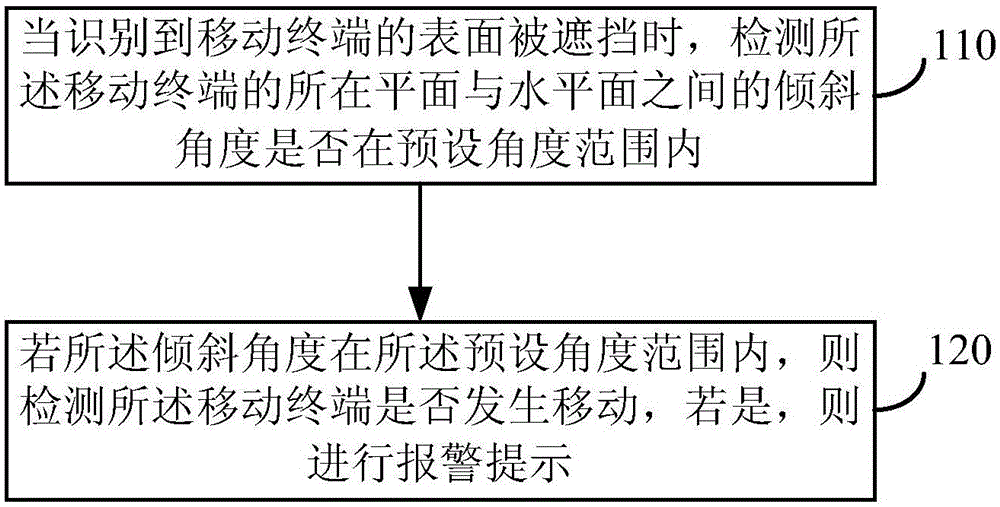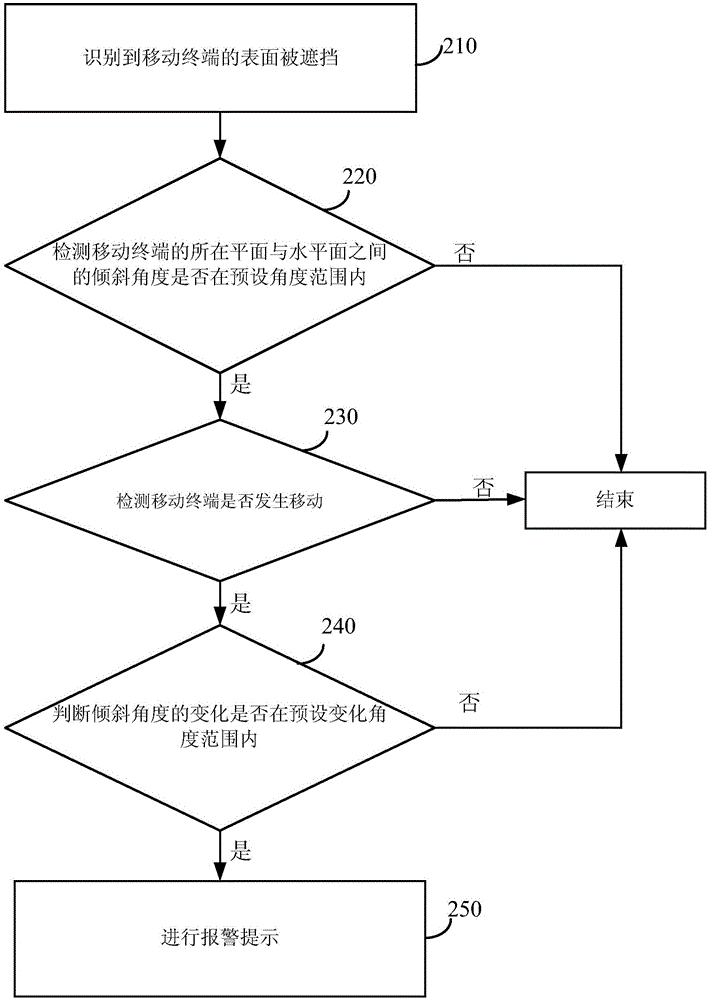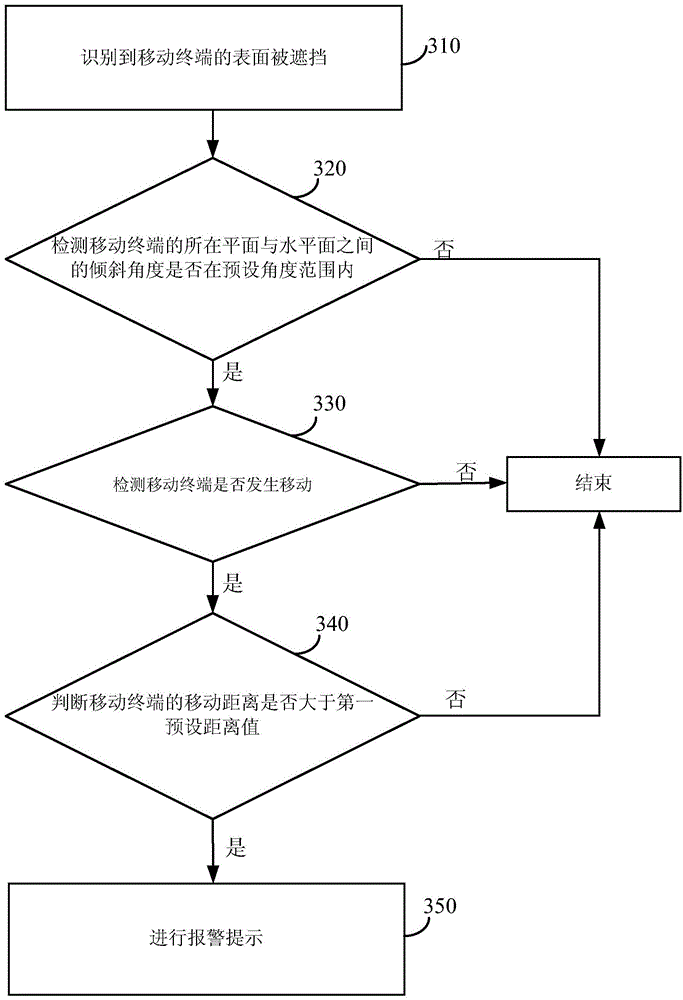Sliding alarm method and device of mobile terminal
A mobile terminal and moving distance technology, applied in the directions of alarms, telephone communication, instruments, etc., can solve the problems of being knocked and broken, mobile terminals broken, mobile terminals dropped and broken, etc., to reduce breakage the effect of the probability of
- Summary
- Abstract
- Description
- Claims
- Application Information
AI Technical Summary
Problems solved by technology
Method used
Image
Examples
Embodiment 1
[0021] figure 1 It is a flow chart of a sliding alarm method for a mobile terminal provided in Embodiment 1 of the present invention. The sliding alarm method for a mobile terminal provided in this embodiment can be used when the mobile terminal is in danger of falling. The method can be executed by the sliding alarm device of the mobile terminal, and the device can be implemented in the form of hardware and / or software. Such as figure 1 As shown, the method includes:
[0022] Step 110, when it is recognized that the surface of the mobile terminal is blocked, detect whether the tilt angle between the plane where the mobile terminal is located and the horizontal plane is within a preset angle range.
[0023] Exemplarily, the mobile terminal may specifically be a terminal such as a mobile phone, a tablet computer, a camera, and a notebook computer. Preferably a mobile phone.
[0024] This step may be specifically preferably, when the first proximity sensor configured on the ...
Embodiment 2
[0036] On the basis of the above-mentioned embodiments, this embodiment is given as a preferred embodiment. Such as figure 2 As shown in FIG. 2 , it is a flowchart of a sliding alarm method for a mobile terminal provided in Embodiment 2. In this method, step 120 in Embodiment 1 is optimized as follows: if the tilt angle is within the preset angle range, then detect whether the mobile terminal moves, and if so, determine whether the change of the tilt angle is within the preset angle range. If it is within the range of the change angle, if so, an alarm will be given.
[0037] The method specifically includes:
[0038] Step 210, recognizing that the surface of the mobile terminal is blocked.
[0039] Step 220 , detecting whether the tilt angle between the plane where the mobile terminal is located and the horizontal plane is within a preset angle range, if yes, execute step 230 ; otherwise, end the process.
[0040] Step 230, detect whether the mobile terminal moves, if yes...
Embodiment 3
[0046] On the basis of the above-mentioned embodiments, this embodiment is given as a preferred embodiment. Such as image 3 As shown, it is a flow chart of a sliding alarm method for a mobile terminal provided in Embodiment 3. In this method, step 120 in Embodiment 1 is optimized as follows: if the tilt angle is within the preset angle range, then detect whether the mobile terminal moves, and if so, determine whether the moving distance of the mobile terminal is greater than If it is the first preset distance value, an alarm prompt will be given.
[0047] The method specifically includes:
[0048] Step 310, identifying that the surface of the mobile terminal is blocked.
[0049] Step 320 , detecting whether the tilt angle between the plane where the mobile terminal is located and the horizontal plane is within a preset angle range, if yes, execute step 330 , otherwise, end the process.
[0050] Step 330, detect whether the mobile terminal moves, if yes, execute step 340, ...
PUM
 Login to View More
Login to View More Abstract
Description
Claims
Application Information
 Login to View More
Login to View More - R&D
- Intellectual Property
- Life Sciences
- Materials
- Tech Scout
- Unparalleled Data Quality
- Higher Quality Content
- 60% Fewer Hallucinations
Browse by: Latest US Patents, China's latest patents, Technical Efficacy Thesaurus, Application Domain, Technology Topic, Popular Technical Reports.
© 2025 PatSnap. All rights reserved.Legal|Privacy policy|Modern Slavery Act Transparency Statement|Sitemap|About US| Contact US: help@patsnap.com



